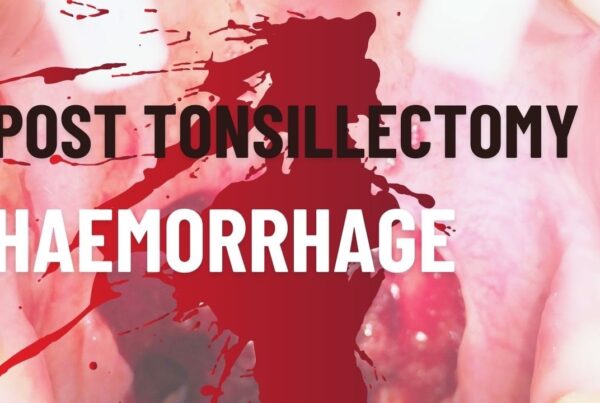Hello Everyone, greetings and welcome.
The approach to treatment of atrial fibrillation is still one of the most controversial areas in emergency arrhythmia management. Is it rate control or is it rhythm control? When do you shock back to sinus, or at least attempt it? Who do you give anticoagulation to?
Given that it affects up to about 1.5% of the population, with a 10% prevalence in the >80 year old group, it is an arrhythmia you will see a lot of.
This month in ‘Medical Talk’ (the latest audio CDs for subscribers are being posted this week), one of the topics we look at is atrial fibrillation (AF) and its management. We look at the evidence and we look at what we do for each case.
In the video above, we shock a lady with atrial fibrillation and angina pectoris.
When should you shock? Well, there are some definite indications. Cardioversion is indicated in those that are haemodynamically UNstable. That can mean chest pain, hypotension, myocardial infarction, but does it? Sometimes these definitions are not so black and white.
We know that patients that have had AF for longer than 48 hours, or have an unknown duration of AF can be cardioverted following transthoracic echo ruling out right atrial thrombus. Certainly there is an indication for anticoagulating these patients for a period of up to 8 weeks after cardioversion. The reason for this is that there is up to a 5% risk of thromboembolism (Am J of Cardiol, 2000) when the AF has been going for more than 48 hours. The important thing to remember is that it won’t necessarily happen when you cardiovert, but can happen days down the track. Greater than 80% of thromboembolic events occur in the first 72 hours and 98% occur in the first 10 days.
The reason thromboembolic events may occur is that atrial contractile dysfunction is present for hours or weeks after cardioversion. This dysfunction is in proportion to the duration of AF prior to cardioversion.
The evidence for AF with definite duration <48 hours and the need for anticoagulation is unclear. Certainly there is no definite indication for anticoagulation. In those patients, it may be more appropriate to just cardiovert.
How do we cardiovert? Biphasic is more effective than monophasic. Set the defibrillator to ‘SYNC’. If it is not synchronised and a shock is delivered on ‘T’, it may degenerate to VENTRICULAR FIBRILLATION (VF).
Use a high energy – 200Joules in biphasic. This is a resistant arrhythmia and will probably not revert with a low energy setting, and may degenerate to VF with low energy.
Sedate the patient – ‘Propofol’ is an appropriate agent for this. Remember that it can cause hypotension, so give an appropriate amount. Delivering a shock can also be painful, so some analgesia is also good. ‘Fentanyl’ is a good analgesic, a narcotic with no deleterious haemodynamic effects – 50-100 micrograms intravenously would be fine.
Beware to attach the pads properly, and beware if the patient has a pacemaker that you attach away from the leads, although damaging these is rare.
You cardiovert the patient back into sinus rhythm – phew! The patient then asks, “So that’s it, is it doctor? I’ll never get that arrhythmia back again, is that right?” What do you tell them? We know that the probability of long term maintenance depends on two things: (i) the duration of AF prior to cardioversion and (ii) the left atrial size. Patients may revert back in days or weeks. In fact less than 75% are still in sinus rhythm one year after cardioversion.
Atrial fibrillation, you need to know about it. Enjoy the blog!
Peter Kas











There are a proportion of people who present with an uncontrolled rate but actually have chronic AF. There is no point in attempting cardioversion. If they are shocked, they may need volume or pressors and then pharmacologic rate control whilst searching for the cause.
Treat the patient not the rhythm!
Good point. If we know they are chronic, that may help. The problem is, in many cases we don’t. Electricity may still be the bestdrug.
There are several groups to talk about and one size doesn’t fit all, quite correct.
In the next few weeks I will post a total review of the atria fibrillation literature, as there is still confusion.
If you don’t know if it is chronic, you also not know how long it has been going – and you won’t know the acute thromboembolic risk.
If a person’s cardiac function is so marginal that rapid AF would make them compromised, it is also likely they are unlikely to revert. Probably poor EF dilated LA.
In most cases, rate control is the safer option. If rate is the sole problem you probably don’t need sinus rhythm as well.
I would acutely electrically cardiovert if the patient fulfills the following conditions:
1) Age less than 45
2) Fit and active
3) No known heart disease or has history of lone paroxysmal AF
4) Fasted > 6 hours
4) Clear onset of symptoms within 48 hours
The rest can be rate controlled /- thromboembolic prophylaxis.